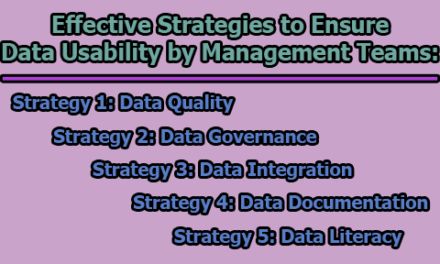Information Security Management Systems (ISMS):
In an era where information is a valuable asset, safeguarding sensitive data has become a critical concern for organizations across industries. Information Security Management Systems (ISMS) play a pivotal role in systematically managing an organization’s sensitive information, aiming to minimize risks and ensure business continuity in the face of potential security breaches. This article delves into the intricacies of ISMS, its workings, benefits, and best practices for effective implementation.
What is ISMS?
ISMS is a structured framework comprising policies and procedures designed to manage an organization’s sensitive data systematically. The primary objective is to proactively limit the impact of security breaches, emphasizing both employee behavior and processes, as well as data and technology. Whether targeted towards specific data types or implemented comprehensively, ISMS can become an integral part of a company’s culture, fostering a secure environment.
How Does ISMS Work?
ISMS provides a systematic approach to managing information security within an organization. The international standard for information security and ISMS creation is ISO/IEC 27001, jointly published by the International Organization for Standardization and the International Electrotechnical Commission. ISO 27001 doesn’t mandate specific actions but provides guidelines for documentation, internal audits, continual improvement, and corrective and preventive action.
To achieve ISO 27001 certification, an organization must develop an ISMS that identifies organizational assets and assesses:
- Risks faced by information assets.
- Steps taken to protect information assets.
- Plan of action in case of a security breach.
- Identification of individuals responsible for each step of the information security process.
The ultimate goal of ISMS is not only to maximize information security but to reach an organization’s desired level of security, adapting to industry-specific needs.
Benefits of ISMS:
1. Protects Sensitive Data: ISMS safeguards various proprietary information assets, including personal data, intellectual property, financial data, customer data, and data entrusted to companies through third parties.
2. Meets Regulatory Compliance: ISMS aids organizations in meeting regulatory and contractual requirements, ensuring compliance with legalities surrounding information systems, which is crucial for industries with critical infrastructures.
3. Provides Business Continuity: Investing in ISMS enhances defense against threats, reducing security incidents and minimizing disruptions, contributing to improved business continuity.
4. Reduces Costs: Through thorough risk assessment, ISMS allows organizations to prioritize high-risk assets, preventing indiscriminate spending on unnecessary defenses and reducing overall costs.
5. Enhances Company Culture: ISMS promotes a comprehensive approach to security and asset management, encouraging all employees to understand risks tied to information assets and adopt security best practices.
6. Adapts to Emerging Threats: As security threats evolve, ISMS helps organizations prepare and adapt to newer threats, ensuring resilience in the face of the continuously changing security landscape.
ISMS Best Practices:
The ISO 27001 and ISO 27002 standards provide best-practice guidelines for setting up an ISMS. Consider the following checklist before investing in an ISMS:
1. Understand Business Needs: Gain a comprehensive understanding of business operations, tools, and information security management systems to align ISMS with business and security requirements.
2. Establish an Information Security Policy: Develop a robust information security policy before implementing ISMS, providing an overview of current security controls within the organization.
3. Monitor Data Access: Regularly monitor access control policies to ensure only authorized individuals gain access to sensitive information. Keep records of logins and authentications for further investigation.
4. Conduct Security Awareness Training: Provide regular security awareness training to all employees, educating them about evolving threat landscapes, common vulnerabilities, and mitigation techniques.
5. Secure Devices: Implement security measures to protect organizational devices from physical damage and tampering, using tools like Google Workspace and Office 365 for built-in device security.
6. Encrypt Data: Encrypt all organizational data to prevent unauthorized access, ensuring the best defense against security threats.
7. Back Up Data: Establish a robust data backup plan to prevent data loss, including considerations for the location, frequency, and security of backups.
8. Conduct an Internal Security Audit: Before implementing ISMS, conduct an internal security audit to identify and fix security loopholes, gaining visibility over security systems, software, and devices.
Implementing ISMS:
The implementation of ISMS involves a defined process, often following a plan-do-check-act approach or studying the ISO 27001 international security standard. The steps include:
1. Define Scope and Objectives: Determine which assets need protection, considering client, stakeholder, and trustee preferences. Clearly define objectives, application areas, and limitations of the ISMS.
2. Identify Assets: Create an inventory of business-critical assets, including hardware, software, services, information, databases, and physical locations.
3. Recognize Risks: Analyze and score risk factors associated with identified assets, considering legal requirements and compliance guidelines.
4. Identify Mitigation Measures: Develop effective measures to mitigate identified risks, providing a clear treatment plan to avoid risks altogether.
5. Make Improvements: Continuously monitor, audit, and check implemented measures for effectiveness. Adapt the ISMS to changing conditions, ensuring an effective approach to mitigating information security risks.
In conclusion, Information Security Management Systems are vital for organizations seeking to safeguard their sensitive information and ensure business continuity in the face of evolving security threats. By adhering to best practices and international standards, organizations can establish a robust ISMS that not only protects sensitive data but also contributes to a secure and resilient business environment.

Library Lecturer at Nurul Amin Degree College










